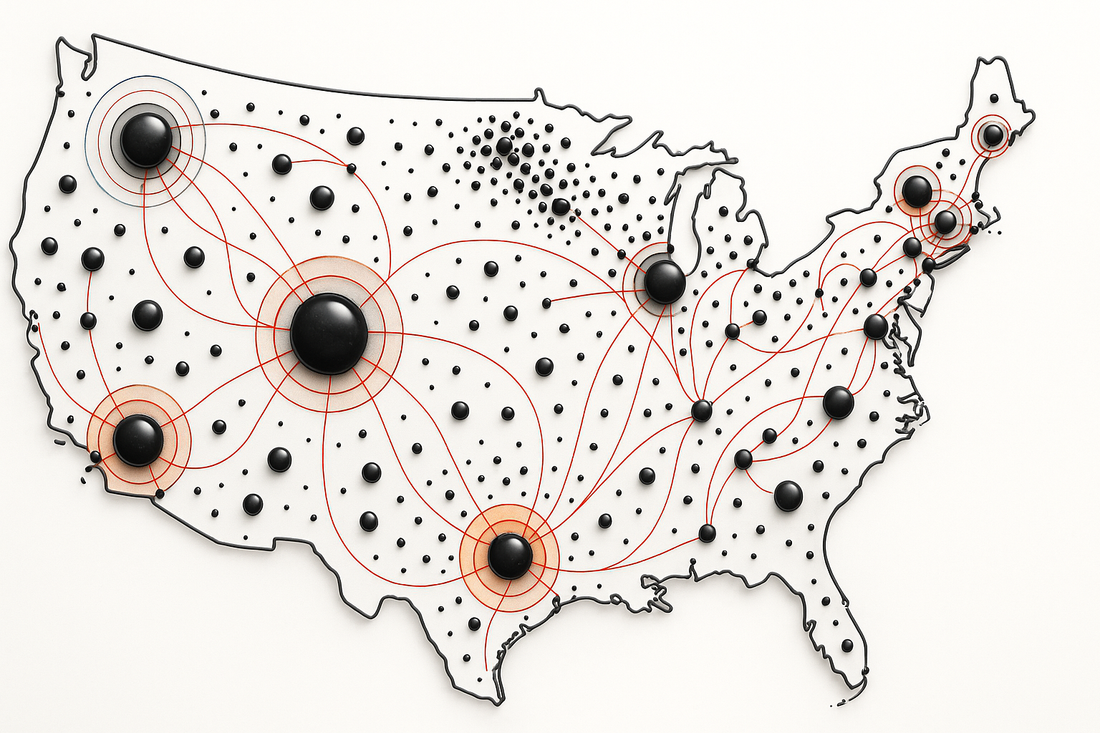
U.S. Black Nitrile Glove Demand Map 2025: Cross-Industry Adoption, Compliance-Led Growth, and Scenario Upgrading
Share
Los Angeles | August 1, 2025 — As a “must-have” category for medical and industrial protection, black nitrile gloves show a broad, diversified usage landscape in the U.S. market in 2025. Demand continues to spill over from hospitals and food plants to auto bays, beauty salons, and households, with compliance and quality acting as the decisive variables.
In healthcare, black nitrile gloves remain a core purchase. Hospitals, clinics, labs, and dental practices rely on them for daily protection in surgery, exams, nursing, and emergency care, balancing infection control with comfort. Driven by aging demographics and infrastructure upgrades, medical gloves maintain more than 40% of revenue share and must meet stringent FDA oversight, prompting brands to invest in material purity, durability, and powder-free, low-allergen profiles.
 Food processing and service show a clear blend of “aesthetics + function.” Compared with light colors, black hides stains under heavy workloads while offering oil/fat resistance and certain chemical resistance—supporting food safety management and worker protection. Labor-intensive restaurants, factories, and delivery operations sustain steady demand growth.
Food processing and service show a clear blend of “aesthetics + function.” Compared with light colors, black hides stains under heavy workloads while offering oil/fat resistance and certain chemical resistance—supporting food safety management and worker protection. Labor-intensive restaurants, factories, and delivery operations sustain steady demand growth.
Automotive manufacturing and maintenance impose tougher requirements for oil/chemical resistance and puncture strength. Black nitrile fits assembly, service, and cleaning tasks and visually masks oil, making it a preferred choice for technicians and line workers. OSHA-related safety compliance further amplifies the need for material strength, secure grip, and stable size coverage.
 In industrial manufacturing and chemicals, black nitrile’s acid/alkali and oil resistance and higher puncture performance enable broad use across plants and chemical handling. With rising attention to safe production and continuous operations, “process protection” during chemical transfer, equipment maintenance, and cleaning becomes more prominent, intensifying differentiation around formulations, thickness grades, and surface textures.
In industrial manufacturing and chemicals, black nitrile’s acid/alkali and oil resistance and higher puncture performance enable broad use across plants and chemical handling. With rising attention to safe production and continuous operations, “process protection” during chemical transfer, equipment maintenance, and cleaning becomes more prominent, intensifying differentiation around formulations, thickness grades, and surface textures.
Beauty and personal services reveal strongly “scenario-driven” demand. Salons, barbers, tattoo studios, and professional cleaning crews favor black for a professional, tidy look. Visual identity and style feed into purchasing preferences, pushing finer choices in size, tactile feel, and skin comfort.
 Households are extending usage to cleaning, gardening, DIY, and pet care, with clear expectations for durability and low-irritation. Black offers intuitive cues for soil detection and replacement timing, supporting regular replenishment in retail and e-commerce.
Households are extending usage to cleaning, gardening, DIY, and pet care, with clear expectations for durability and low-irritation. Black offers intuitive cues for soil detection and replacement timing, supporting regular replenishment in retail and e-commerce.
Electronics and pharmaceuticals—sectors with higher cleanliness and ESD control—are accelerating adoption of higher-end black nitrile gloves. In electronics, pharma, and medical devices, gloves must meet low-particle, low-extractable, and specified cleanliness levels; labs and cleanrooms are placing greater emphasis on material consistency and batch stability.
Overall, 2025 shows a “multi-industry, multi-scenario, compliance-intensive” demand profile. Healthcare and food form the base, while auto, industrial, and chemical continue to scale; beauty and services broaden boundaries; households establish steady replenishment. In high-end manufacturing and life sciences, cleanliness and stability metrics keep rising. With stricter compliance and higher brand concentration, competition is heating up around material engineering, quality systems, and compliant channels.
